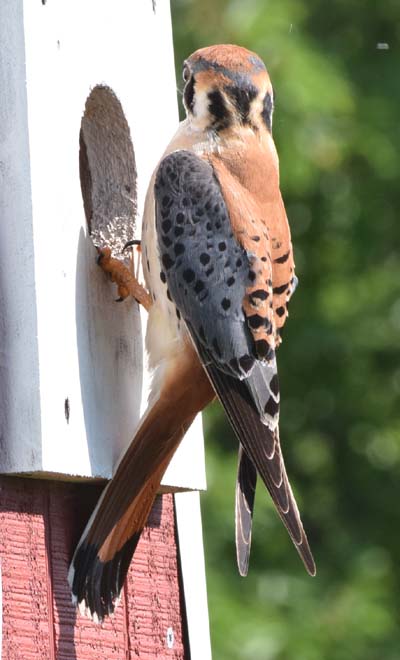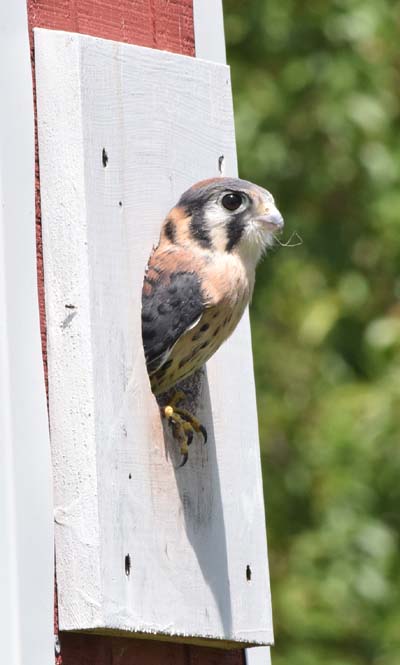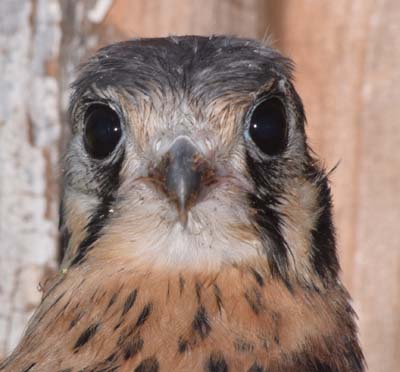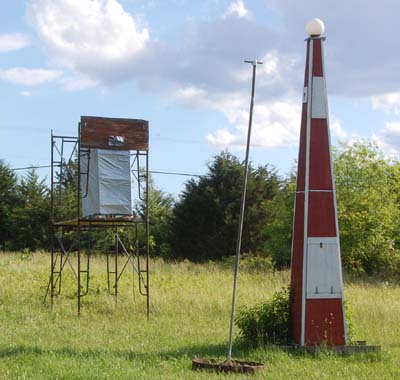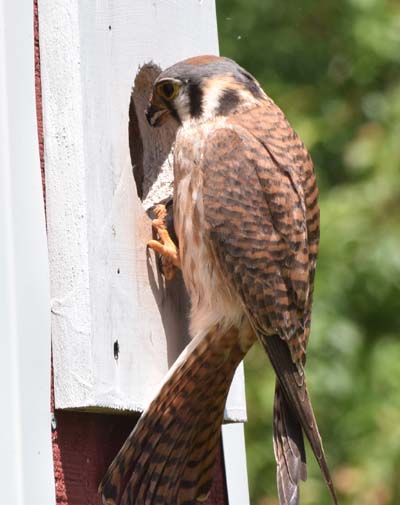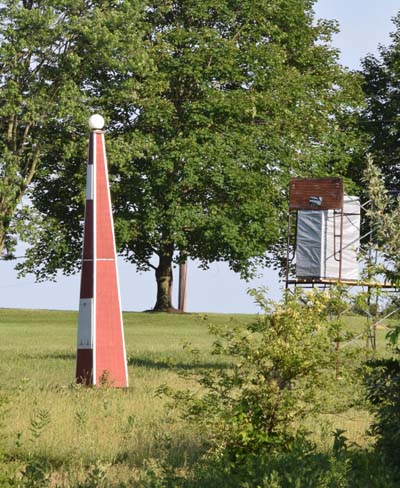2017 Kestrel Nesting
Kestrels successfully raised a brood of 4 in box A on the barn wall. The nest box was monitored continuously with a small video camera and cap box with motion detection. All visits to the box were recorded in a daily log. As usual, flickers, starlings and kestrels made frequent visits to the box before the first kestrel egg was laid. A brief summary follows.
Feb 18 – monitoring began. Female kestrel enters box for 6 minutes
Feb 19 – Male kestrel visits briefly and starlings make frequent visits
Both male and female kestrels would briefly visit the box daily and starlings would frequently visit for longer periods.
March 8 – A starling spends the night in the nest for the first time. This was repeated for the next two nights.
March 11 – The female kestrel spends the night in the box for the first time.
March 12 – The female kestrel leaves the box at 6:26 am. A male flicker enters the box for the first time. The female kestrel enters at 17:30 for the night.
March 13 – Soon after the female kestrel leaves the box at 6:13am, a starling enters. The kestrel immediately returns and the starling leaves. This routine is now repeated almost daily. The kestrel routs the starling simply by entering the box – no contest.
However, the starlings continue to frequently enter the box.
March 21 – Starlings begin to build a nest. Kestrel not spending night in box, but still visiting daily, and occasionally finding and routing starlings.
March 28 – I removed much starling nesting material.
March 29 – Starlings rebuilding nest. I trapped one starling and removed nesting material and added fresh wood shavings. Starlings immediately begin rebuilding. Male flicker enters and begins removing starling nesting material.
April 8 – Male flicker spends most of day in box, removing starling grass and tapping.
April 10 – Male flicker returns and taps at entrance for one hour. Kestrels continue to visit daily.
April 11 – Grey squirrel entered with one pup overnight. Observed at 5:28am. The infrared illumination is out on the camera. The squirrels left soon after I removed the box cap and took a flash photo. The next day she returned for three minutes, never to return again. I learned several weeks later that she had moved around the corner, into an inactivated starling trap, when I observed two pups peering at me from the trap entrance.
April 12 – After squirrel visit, the flicker and kestrels make several longer visits, each appearing to think the box is theirs.
April 14 – Only male kestrel visits
April 15 – Only kestrel visits, mostly by female.
April 16 – Kestrels rule from here on. Female makes longer visits, up to 72 minutes,
then begins staying in box overnight.
April 19 – first egg layed
April 21 – second egg layed
April 23 – third egg layed
April 25 – fourth egg layed
April 27 – fifth egg layed
April 28 – male shares incubation, as in previous years
April 29 – sixth egg laid
May 23 – 10:25 first hatch, 13:41 second
hatch, 14:09 third hatch
May 24 – fourth hatch
May 25 – fifth hatch
May 27 – sixth hatch
May 30 – sixth nestling died overnight
June 8 – Smallest nestling down and malnourished.
Dead juvenile bat in nest – pecked at by nestlings, one of which unsuccessfully attempts to swallow it. The bat is continually pushed about and pecked at, to no avail. Late in the day the 5th nestling appears to be dead and two of the nestlings suddenly begin to peck at it just as they would with a prey item. The second largest nestling tears into the dead nestling methodically, first at the neck and then at the belly. The female kestrel enters with prey, feeds each of the 4 remaining nestlings and then leaves without touching the dead nestling or the bat.
June 11 – The fourth chick is much smaller and less mature than the others, but quite active. He is the only male. All 4 seem to be doing fine.
June 21 – The first three nestlings fledge, leaving the one male alone in the box.
June 27 – The male fledges.
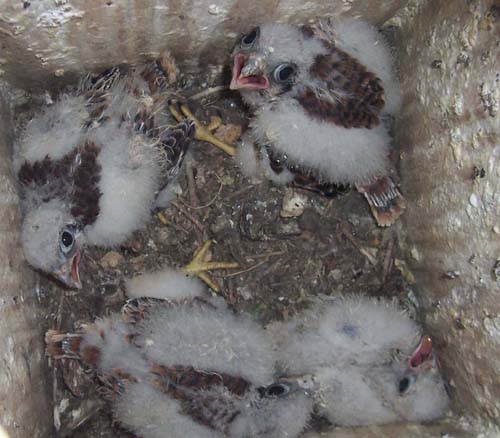
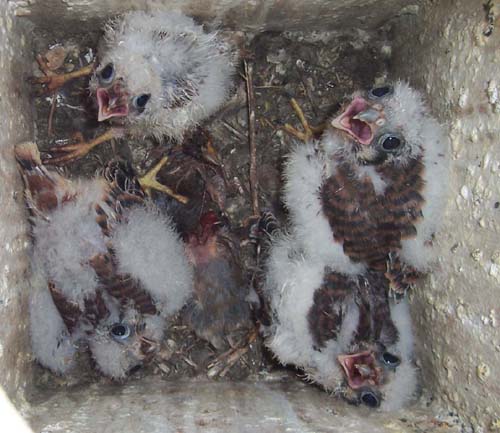
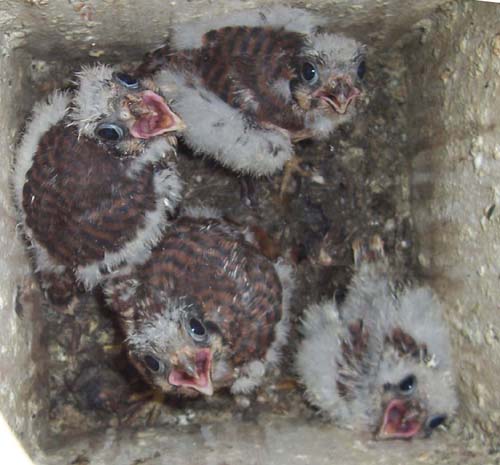
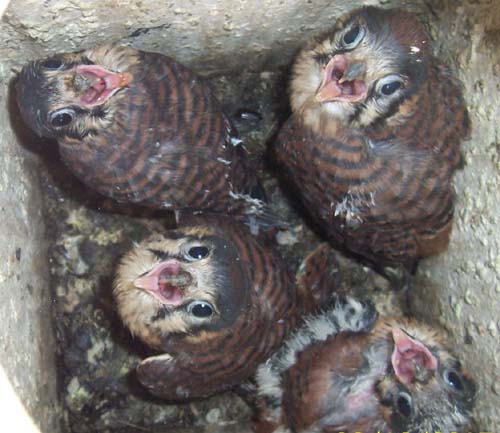
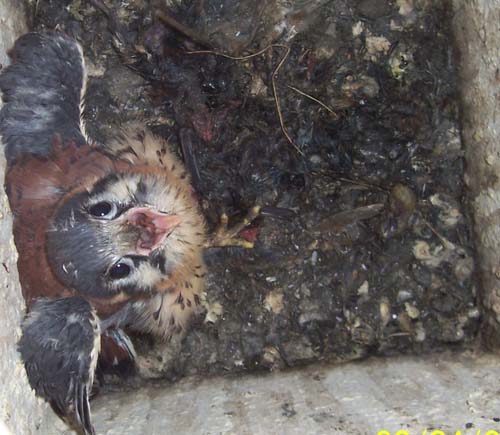
|
